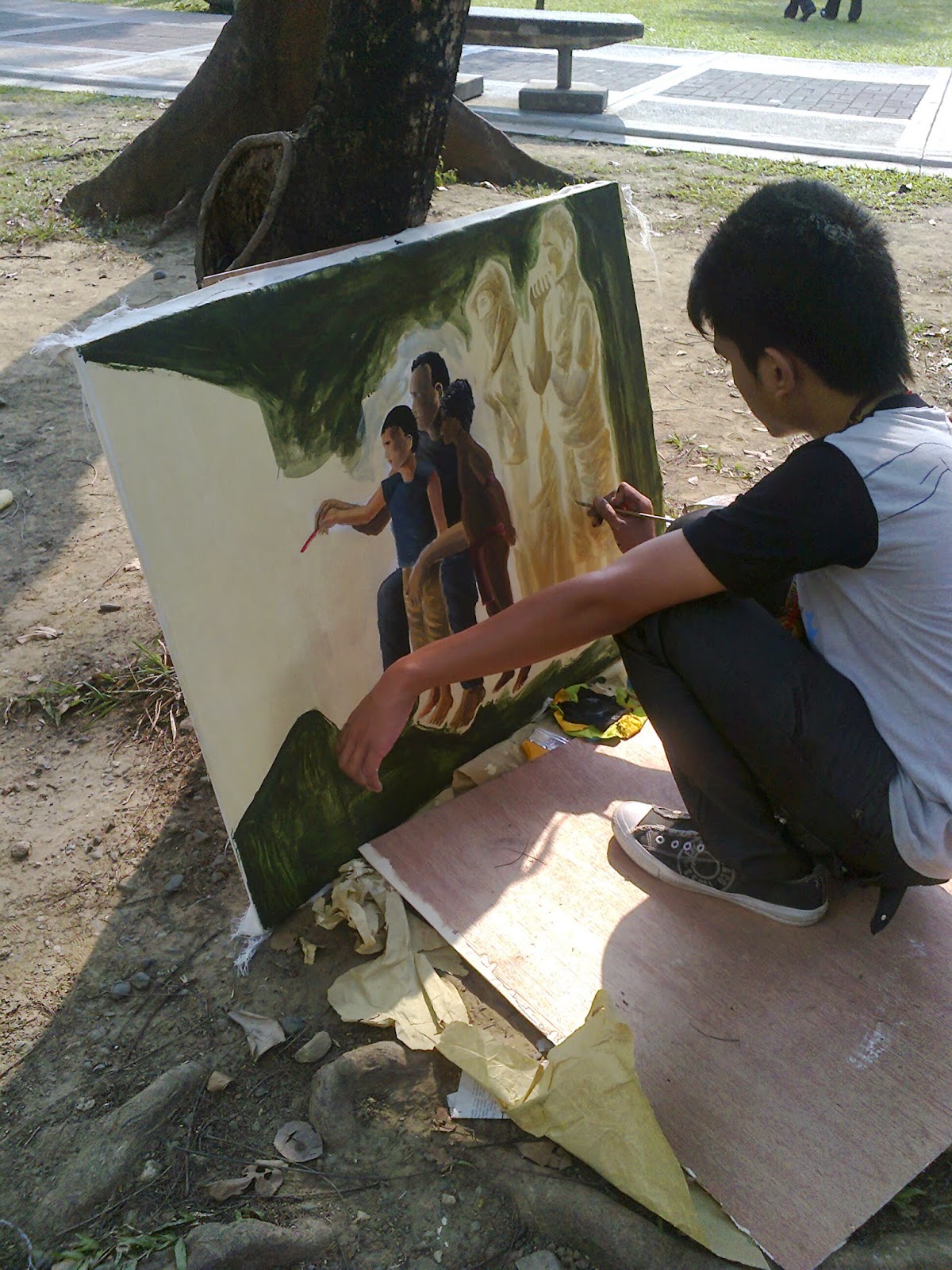Your unfinished work could be your masterpiece!
Remember those things you thought were "unfinished" could be your greatest treasures, and who knows - people some day will remember you because of them.
Dr Abe V Rotor
Photos by Anna Christina R Rotor and Leo Carlo R Rotor
Living with Nature - School on Blog
Lesson: Don't discard your unfinished work, say a painting, novel, sculpture. Try to get back to it. It could be your masterpiece. Maybe you were not able to complete it because you gave way to the priorities of living, or finding new interests, challenges, assignments, or simply you lost steam, so to speak. Or you say you've grown too old to complete it.
Take the case of the mysterious unfinished human figures at the University of the Philippines at Diliman, QC. Do they mean anything but abandonment? To me it's not. So with my daughter Anna and son Leo Carlo who took these photographs.

 These unfinished life size human figures occupy the “less trodden” front yard of the UP College of Fine Arts in Diliman, QC. The artists may have in mind the portrayal of man more as a Homo faber - man the worker or maker rather than his attribute as the reasoning man (Homo sapiens) - and much less the playing man - Homo ludens. Here the figures appear to be workers of the land. In fact one resembles the Man with a Hoe by Markham. Another appears to be carrying an imaginary heavy load.
These unfinished life size human figures occupy the “less trodden” front yard of the UP College of Fine Arts in Diliman, QC. The artists may have in mind the portrayal of man more as a Homo faber - man the worker or maker rather than his attribute as the reasoning man (Homo sapiens) - and much less the playing man - Homo ludens. Here the figures appear to be workers of the land. In fact one resembles the Man with a Hoe by Markham. Another appears to be carrying an imaginary heavy load. What is puzzling however, is the representation of peaceful death. While the living struggle, the dead lies in true rest, cradled by the earth. Which then changes the scenario if all the figures were to be directed to a solemn and sorrowful occasion of burying a departed member in thin ceremonious atmosphere. It now expresses the highest attribute of man - Homo spiritus - the praying man who places completely his fate to a Higher Being. The viewer now turns his thoughts to grief and compassion, and the scene is no longer the farm but a sacred ground. The imagined heavy load is a burden of the heart, the figures are bent not by the burden of work but by the loss of a loved one.
What is puzzling however, is the representation of peaceful death. While the living struggle, the dead lies in true rest, cradled by the earth. Which then changes the scenario if all the figures were to be directed to a solemn and sorrowful occasion of burying a departed member in thin ceremonious atmosphere. It now expresses the highest attribute of man - Homo spiritus - the praying man who places completely his fate to a Higher Being. The viewer now turns his thoughts to grief and compassion, and the scene is no longer the farm but a sacred ground. The imagined heavy load is a burden of the heart, the figures are bent not by the burden of work but by the loss of a loved one. Art is like that. It is like poetry, the meaning is hidden "between the lines." Like impressions in Impressionism; points in Pointillism. Or masked symbols in Pablo Picasso's plaza mural - Guernica. Unfinished works of masters often become their masterpieces like the Unfinished Symphony of Beethoven, and Mozart's Requiem, his last composition commissioned by a mysterious person. Mozart died before finishing it, and Requiem became his own. Claude Monet repeatedly painted his favorite Nymphaea Waterlilies until darkness took over his failing sight - so with the painting's clarity. Though half finished it is Monet's final signature.
Art is like that. It is like poetry, the meaning is hidden "between the lines." Like impressions in Impressionism; points in Pointillism. Or masked symbols in Pablo Picasso's plaza mural - Guernica. Unfinished works of masters often become their masterpieces like the Unfinished Symphony of Beethoven, and Mozart's Requiem, his last composition commissioned by a mysterious person. Mozart died before finishing it, and Requiem became his own. Claude Monet repeatedly painted his favorite Nymphaea Waterlilies until darkness took over his failing sight - so with the painting's clarity. Though half finished it is Monet's final signature.Venus de Milo is more beautiful with her arms missing. And for this, the best artists in the world gave up their attempt to supply her arms.
The mystery of the human figures of UP Diliman emanates from the anonymity of their theme that stands at the crossroad of human imagination searching for the meaning of life, exacerbated by their unfinished, and apparent abandoned state.
So what have you discovered about yourself by going back to those unfinished works? Share with us your experience. Remember those things you abandoned could be your greatest treasures, and who knows - people some day will remember you because of them. ~









































